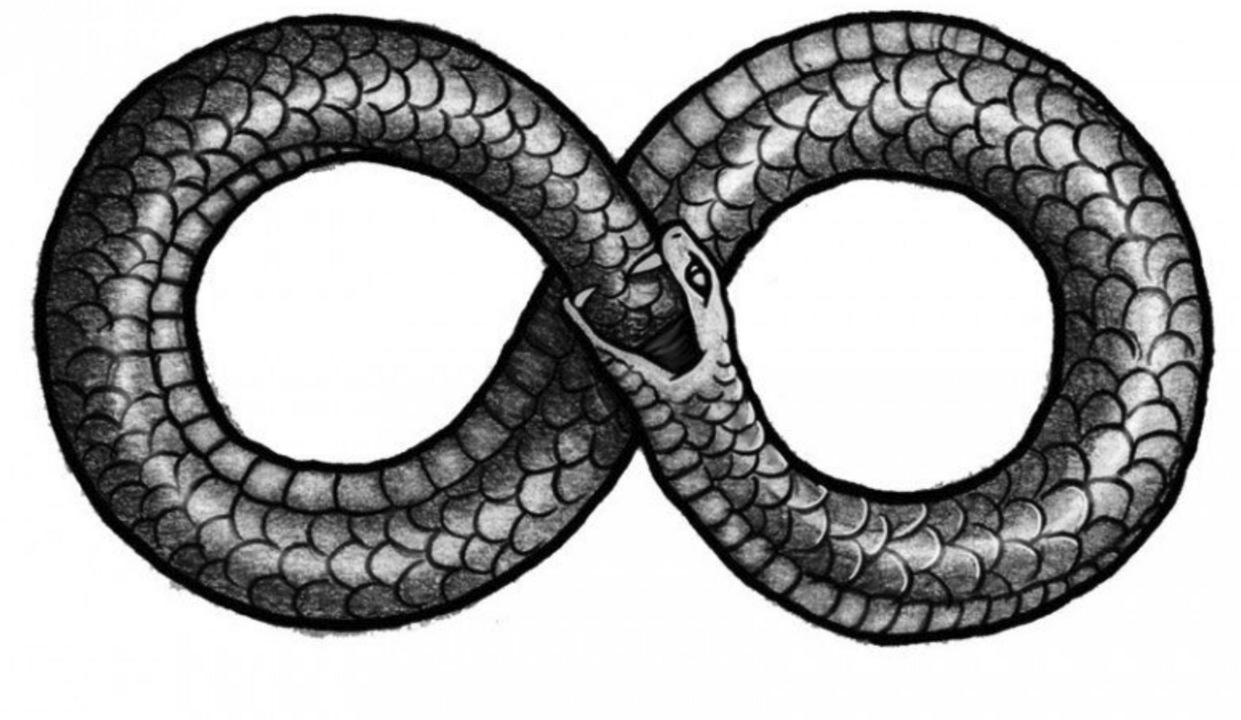
Embracing the Ouroboros: Unraveling the Infinite Loop of Creativity and Literature
The symbol of a serpent or dragon eating its tail, known as the Ouroboros, represents the unending cycle of birth, aging, and death. We have seen the symbol in many cultures, and many people believe to know its meaning, though many rarely look deeper. Because of its pervasiveness in mythical and religious narratives, it serves as a potent metaphor for a wide range of literary concepts and practices. I will use the Ouroboros in this article to illuminate the creative process, plot, themes, and intertextuality.
Why? Because so much of writing lives in the process of birthing an idea, growing old with it, and, hopefully, publishing it, a kind of death once released out into the world.
The Ouroboros is an attractive emblem of the circular nature of the writing process. Writers frequently go through iterations of drafting, revising, and editing their work. This recursive cycle can be interpreted as a metaphor for the creative process, representing the ongoing cycle of idea generation, refinement, and application.
The Ouroboros also have a significant impact on intertextuality. The Ouroboros represents how all literature is intertwined and cannot be considered independent. If you meditate on the thought long enough, you will find everything connected, from what your character said at the beginning to your story or a seemingly random event in the middle of your manuscript. Everything is an evolving dialogue between texts, authors, and readers. Literature is timeless because authors continually recycle plot elements and themes from one book to the next for the story's sake and share stories from cultures that span millennia.

The Ouroboros can also represent the repetitive patterns in some story forms. When a novel or narrative begins and ends in the exact location or with the same set of circumstances, it might give the reader the impression that they are experiencing the same thing. This method of storytelling can make the topics discussed feel ageless and emphasize their continued importance.
The Ouroboros is a standard literary device used to delve into themes of introspection and self-analysis. A character's path of self-discovery might result in either a return to or a refinement of their initial self. Because of its emphasis on introspection and development, the Ouroboros is a compelling metaphor for this metamorphosis.
The endless circle of time can also be symbolized by the Ouroboros, as can the cyclical nature of events. The human experience of time, the universality of existence, and the inevitability of change are all topics that can be explored through such symbols in literary works. Authors might use this technique to persuade readers to ponder the work's deeper philosophical underpinnings.
The Ouroboros is a potent literary symbol with deep roots in many areas of the writing process. Their presence in fictional works improves understanding of the writing process, narrative structure, themes, and intertextuality. Writing with the Ouroboros in mind allows us to draw on the ancient wisdom it represents, resulting in lasting outcomes that impact readers.
#OuroborosSymbolism #CreativeProcess #CycleOfWriting #Intertextuality #CircularNarratives #TimelessThemes #SelfDiscovery #LiteraryMetaphor #CyclicalEvents #AncientWisdom
Mitchell Duran is a Lead Producer, Researcher, and Writer at CryptosRus.com and a freelance writer based in San Francisco, California.
Read more articles like this on his website.